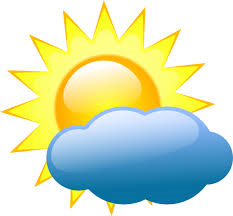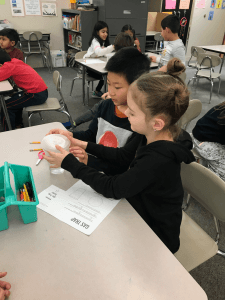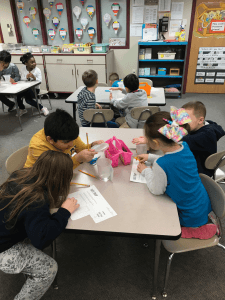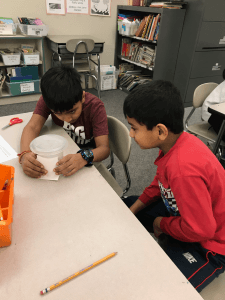Posted by kavery508 | Posted in Uncategorized | Posted on January 7, 2019
Happy New Year! I hope your holidays were full of cheer and good memories to cherish. I got to catch up with family and friends and recharge! Onward…
Our CAFE focus this week is on Inferring, which is a strategy we use all the time to help us understand what we’re reading. When we infer, we use our schema (what we already know about something) and combine it with clues from the text to understand something new. Consider these lines from Eloise Greenfield’s poem Things: Went to the beach/Played on the shore/Built me a sandhouse/Ain’t got it no more. My schema tells me that at the beach we build sandcastles, which is what she likely means, and sometimes the ocean comes and washes them away–that’s why the speaker “Ain’t got it no more.” Kids and grownups infer all the time in real life, for example: Snow is in the forecast. When the phone rings at 5:30 AM we can infer school will be delayed or cancelled! It’s smart to catch it when it happens and ask “How did you infer that? What were your clues?” Here is a site that, while designed for teachers, has lots of great info and links on inference: http://www.minds-in-bloom.com/2012/02/tips-for-teaching-inference.html

Chapter 6 of MIF focuses on learning multiplication facts of 2s, 5s, and 10s by teaching the connection between skip-counting and multiplication, and using that understanding to solve problems. To solve 8 x 2, for example, we want students to count by 2 eight times. It is a way of learning the meaning behind the numbers involved in multiplication instead of just memorizing facts (which has value, too, just not on its own). One way we teach this is to have students count pairs of objects. Next is counting on fingers while counting aloud by 2 (1 finger up gives you 2, or 1 x 2; etc.). Students will then be introduced to dot paper, which for this chapter shows arrays of 2s, 5s, or 10s. The example below shows 4 x 2. On homework, students should use dot paper by counting down the rows by 2s, then naming how many rows they counted. In this example, they should say “2, 4, 6, 8; I counted 4 times; 4 times 2 is 8.”
 As we continue our exploration of weather, students will conduct daily observations of temperature, clouds, and weather type over the next month. We will then analyze the data, look for trends, evaluate methods for presenting data (e.g. bar graphs vs. pie charts for example), and draw conclusions of winter weather in Shrewsbury. In addition, this week we will conduct an investigation around evaporation to answer the question “Where does the water go?”. We will also learn to identify cloud types and use that to predict the weather. Weather Wiz Kids is a fantastic site for learning more about and all things weather. And here’s a favorite, Bill Nye the Science Guy, teaching about how clouds are formed.
As we continue our exploration of weather, students will conduct daily observations of temperature, clouds, and weather type over the next month. We will then analyze the data, look for trends, evaluate methods for presenting data (e.g. bar graphs vs. pie charts for example), and draw conclusions of winter weather in Shrewsbury. In addition, this week we will conduct an investigation around evaporation to answer the question “Where does the water go?”. We will also learn to identify cloud types and use that to predict the weather. Weather Wiz Kids is a fantastic site for learning more about and all things weather. And here’s a favorite, Bill Nye the Science Guy, teaching about how clouds are formed.
And here’s us learning to make a cloud in a cup by trapping water vapor and observing the results:








